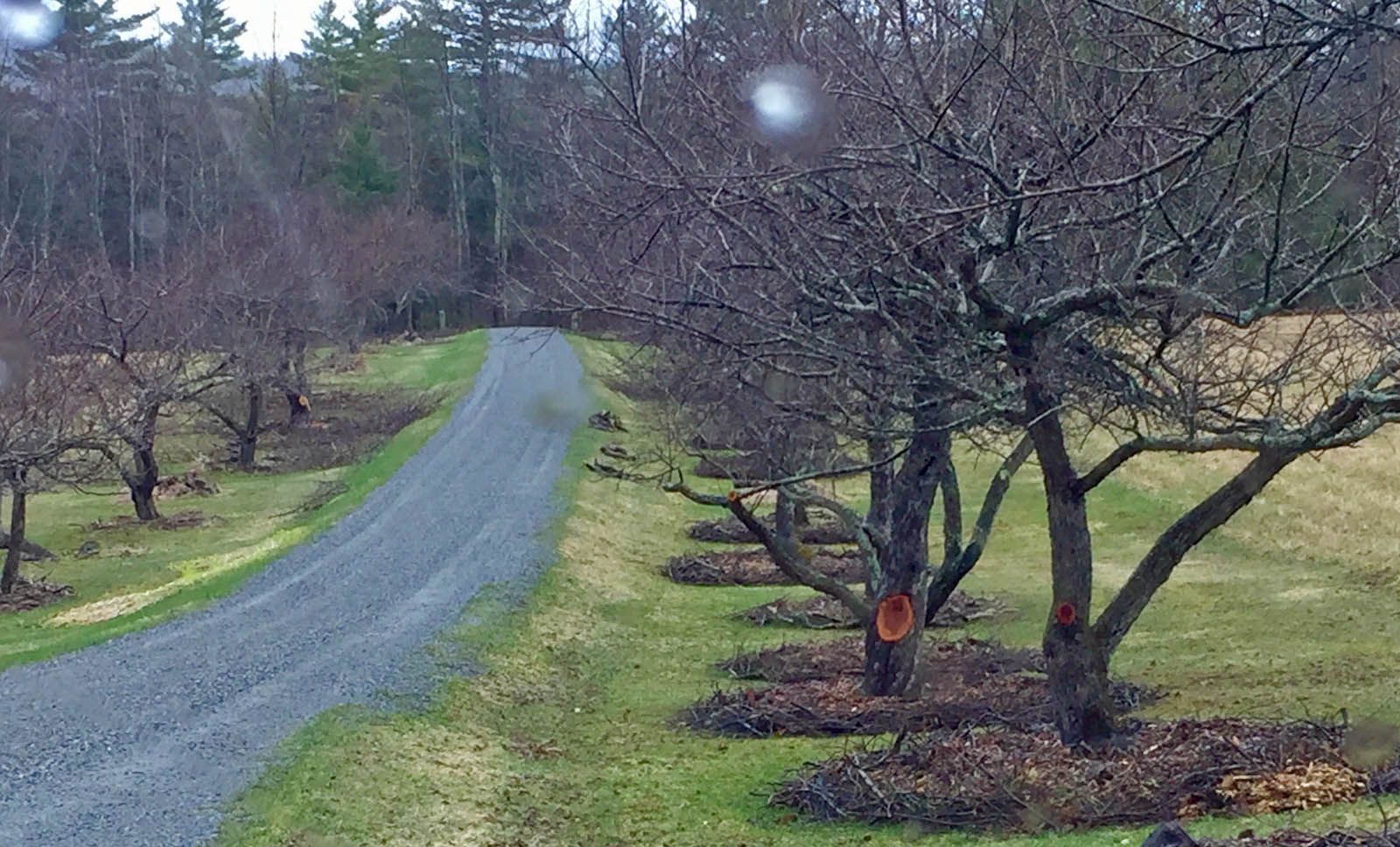
Up at Vermont Family Forests’ Wells Farm in Lincoln, we’ve done some pretty significant pruning of the 50 or so apple trees in the farm’s orchard. We bucked the larger-diameter branches for firewood. But we’re feeding the nitrogen-packed smaller branches and twigs right back to the trees they came from, creating white-fungus-enhancing ramial mulch.
Apple trees are deciduous trees, native to the fruit-rich forests of Kazakhstan. So they grow best in deciduous forest soil, nurtured by the detritus of deciduous trees. A particular subset of fungi, known as white rots, thrive in decaying deciduous wood and help release the nutrients of that wood back into the soil. Small diameter twigs are the most nutrient-rich part of a tree, so feeding those twigs back to the apple trees will give a burst of nutrients to the trees, increase moisture retention, and improve soil structure by building organic matter.
You don’t need a gas-powered mulcher to create ramial mulch. Just use a pair of long-handled loppers to clip the branches into twigs 2-4 feet long and lay them in a wide ring around the trees as if you’re building a bird’s nest. The flatter the twigs lay on the ground, the more quickly they’ll break down. Your trees will thank you in bountiful apples for your efforts.






